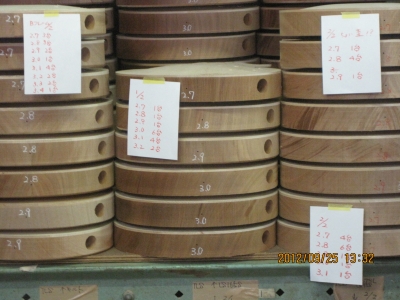In an effort to try and sort out what some of the remaining mysteries are with:
- the second number in the production code,
- why some serial numbers are out of sequence relative to pot dates and month codes,
- etc.
I decided to try to guess at what the likely sequence is for putting together an ST guitar for Tokai hoping that might give us some clues through looking at what happens when and what needed to then be coordinated, possibly through a system of production codes.
Tokai Neck and Body Codes
- the second number in the production code,
- why some serial numbers are out of sequence relative to pot dates and month codes,
- etc.
I decided to try to guess at what the likely sequence is for putting together an ST guitar for Tokai hoping that might give us some clues through looking at what happens when and what needed to then be coordinated, possibly through a system of production codes.
Tokai Neck and Body Codes
Last edited:





















































